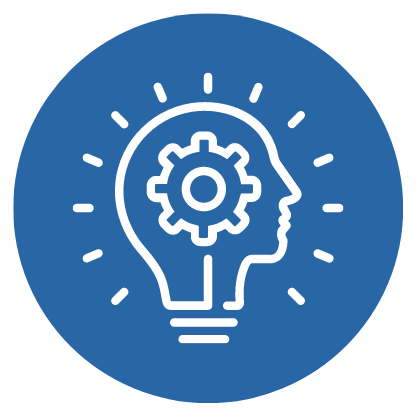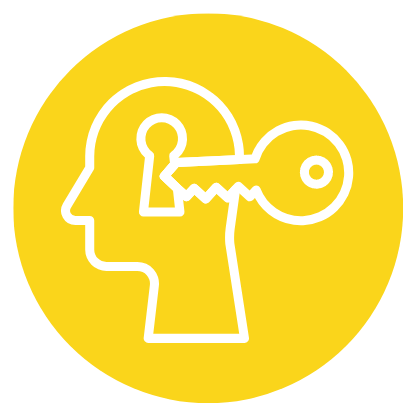Design Thinking Test: 5 | Mindful Marks
Reference: Mindful Marks. (2018, June 10). 5. Design Thinking: Test [Video]. YouTube.
We Make Your Education Count

Get the Credit You Deserve and Become the Most Attractive Job Candidate by Earning and Posting A+ Badges to Your Linkedin Profile.
Sign Up to Get Started at Accredicity
Unlock the power of design thinking test and discover how some things are never finished.Design Thinking Test is an informative video by Pattie Belle Hastings that explains the concept of testing and refining as part of the Design Thinking process. Hastings explains that testing is an essential part of the process, as some things are never finished, due to the continuous debugging and updating of digital works. The video highlights the importance of testing and learning from the results, in order to refine and improve the problem-solving process. The video also discusses the various ways of testing, such as screening and public service announcements, launching websites, debugging books, shipping products and promoting them. Testing and refining is a continuous loop in the Design Thinking process, and is an essential part of problem-solving. Learning Outline1. The test phase is an important part of the design thinking process. Instructional ContentDesign Thinking is a powerful tool to help us solve complex problems. In the fifth step of the Design Thinking process, we Test our products, services, and solutions to ensure they meet our criteria and goals. Testing is an ongoing process of refinement and learning, with the aim to solve the problem we set out to define. Testing can take many forms, depending on the type of product or service. If we are creating a movie, we might screen it before a test audience or focus group. For websites, we launch the site and collect data to identify areas that need improvement. With books, we can debug and refine the text after the book is printed and shipped. With software or hardware, we may deliver a beta version for additional testing and refinement. No matter what form of testing we use, the key objective is to learn and refine until we actually solve the problem. Testing is an essential step in the Design Thinking process as it allows us to adjust our solutions based on feedback and data. Without testing, we wouldn’t be able to identify and solve the problems we set out to define. Watch this video to learn more about testing in the Design Thinking process. In it, you’ll find out why some things are never finished and how testing is an infinite loop of refinement and learning. Leadership
|

Design thinking is like baking a cake. You mix up all the ingredients, bake it in the oven, then you can 'test' it by giving it to family and friends to taste. The feedback you get helps you to know if it needs more sugar, or maybe a bit of frosting. You can then make adjustments, and bake it again, until it's just the right sweetness. Design thinking is similar, you can test your designs by launching it, collecting data and looking for bugs. You can then use this feedback to refine your design, until it solves the problem you set out to solve. It's an infinite loop - like a video game, you can keep playing and refining until you reach the end. Video QuotesPattie Belle Hastings: “How often do you get a notification that you have apps that need to be updated how often do websites need to be updated and redesigned? There are some things that we make in the digital world these days that are never actually finished they are never complete.” Pattie Belle Hastings: “Some things are finished - a movie is finished a book is finished brochures are printed - that does not mean that we can't reflect and learn on those things that actually do leave the warehouse are screened or or broadcast or delivered in some form we can reflect and learn on those and that is the key component of the test phase.” Pattie Belle Hastings: “So some things are never finished we work in an infinite infinite loop and we refine our problem solutions based on what we learn and hopefully we solve these problems that we set out to define in the beginning.” Related Quotes"We need to be testing our designs continuously." - Tim Brown "Design thinking is about testing and iteration." - Tim Brown "Design thinking is a process of experimentation and iteration in order to uncover insights that can drive great ideas." - Tim Brown Competencies1. Creativity and Innovation Learning Outcomes1. Analyze: Analyze the importance of debugging products after they are released, as well as the potential implications of not doing so. 2. Evaluate: Evaluate the impact of continual refinement of product design and development on the success of a product. 3. Create: Create a plan for the testing phase of a product, including focus groups and data collection. 4. Apply: Apply the concept of design thinking to a particular product or service, exploring how it can be used to solve a problem. 5. Understand: Understand the importance of continual testing and refining of products and services to ensure their success. 6. Remember: Remember the concept of the “infinite loop” and how it relates to design thinking and the testing phase of product development. Sample Answers1. The video explains that some things are never finished, such as apps and websites which need to be constantly updated and redesigned. In this scenario, the test phase is essential because through it, designers can collect data and learn from it to refine the problem solutions. 2. The video provides different ways to look at the test phase, such as screening a motion graphic, launching a website, debugging software and hardware, shipping products, and promoting them. All of these activities provide the opportunity for data collection and refinement. 3. An important concept from the video is the idea of an infinite loop in the design thinking process. This concept states that the process is ongoing, and designers must continually learn and refine their problem solutions until the problem is solved. Pattie Belle HastingsPattie Belle Hastings is an experienced social design expert and the founder of Social Design Ventures. She has a degree in Anthropology from Emory University and has over 15 years of experience in the design field, having worked on projects for Microsoft, the United Nations, the World Bank, and the US government. She is an expert on Design Thinking Test because she has a deep understanding of the process of design and the needs and motivations of people. Pattie Belle Hastings is also a founding member of the Global Social Design Network and the Social Design Lab, which are both organizations dedicated to helping people use design to create positive social change. Learning DesignCreativity and Innovation, Problem Solving, and Decision Making are three core competencies that are essential for effective leadership. Due to the fast-changing environment of the 21st century, these competencies are increasingly in demand. Creativity and Innovation help leaders think outside the box and come up with unique ideas and solutions. Problem Solving helps leaders analyze situations and develop solutions. Decision Making allows leaders to make sound decisions that align with the organization’s objectives. In order to help students build these competencies, the course should use a combination of experiential learning, problem-based learning, and case studies. Experiential learning allows students to gain hands-on experience that will help them apply their knowledge in the real world. Problem-based learning promotes the development of creative solutions to complex problems. Finally, case studies provide students with a real-world context in which to practice their leadership skills. Overall, these competencies are essential for effective leadership in the 21st century. The course should use a combination of experiential learning, problem-based learning, and case studies to help students develop and hone these skills. AssessmentQ: Why do some things never finish in the digital world? Answer: B. because they are constantly being updated QuestionsCommon Hypothetical Questions: Real-Life Examples & Scenarios: KeywordsDesign Thinking,Test Audience,Focus Group,Debugging Software,Debugging Book,Public Service Announcement,Motion Graphic,Launch Website,Shipping Products,Promoting Products,Beta Version Facts1. Design Thinking is an iterative process, with no final product. Trends1. Implementing user feedback surveys and focus groups as part of the design process to ensure that the product meets the needs of the target audience. SourceThis learning instructional guidance was formulated using the GPT-3 language model created by OpenAI. ShareIt's time to #Test and #Refine! In the #DesignThinking process, some things are never finished. We must monitor, collect data, and continue to adjust until the problem is solved. #Debugging #DebuggingSoftware #DebuggingHardware #Testing #TestingSoftware #TestingHardware #Research #Ideation #BetaVersion #InfiniteLoop #EmbraceChange #CreativeThinking #Tech @Accredicity |








 184 Creds - Leadership
184 Creds - Leadership



